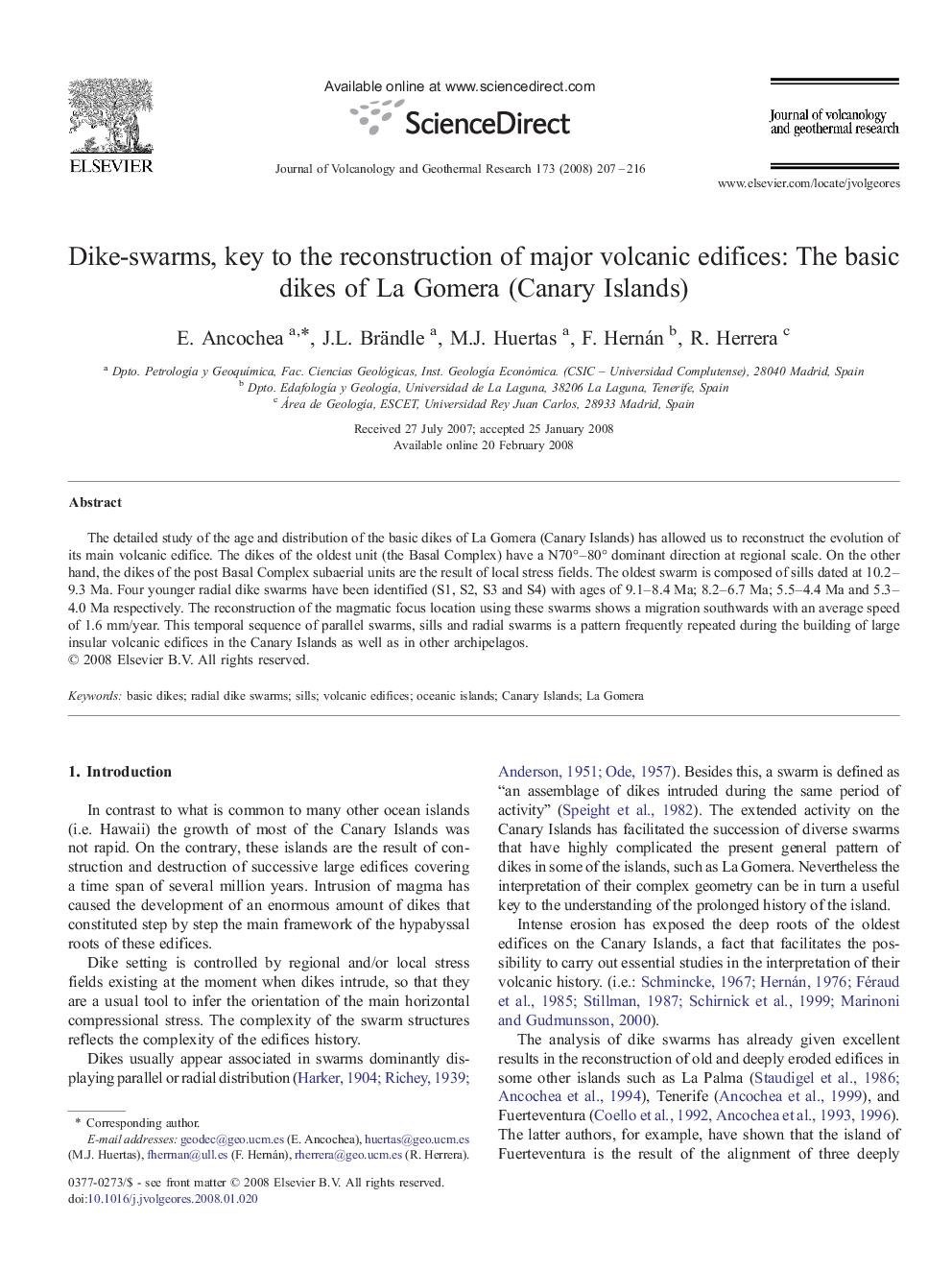| Article ID | Journal | Published Year | Pages | File Type |
|---|---|---|---|---|
| 4715298 | Journal of Volcanology and Geothermal Research | 2008 | 10 Pages |
The detailed study of the age and distribution of the basic dikes of La Gomera (Canary Islands) has allowed us to reconstruct the evolution of its main volcanic edifice. The dikes of the oldest unit (the Basal Complex) have a N70°–80° dominant direction at regional scale. On the other hand, the dikes of the post Basal Complex subaerial units are the result of local stress fields. The oldest swarm is composed of sills dated at 10.2–9.3 Ma. Four younger radial dike swarms have been identified (S1, S2, S3 and S4) with ages of 9.1–8.4 Ma; 8.2–6.7 Ma; 5.5–4.4 Ma and 5.3–4.0 Ma respectively. The reconstruction of the magmatic focus location using these swarms shows a migration southwards with an average speed of 1.6 mm/year. This temporal sequence of parallel swarms, sills and radial swarms is a pattern frequently repeated during the building of large insular volcanic edifices in the Canary Islands as well as in other archipelagos.
